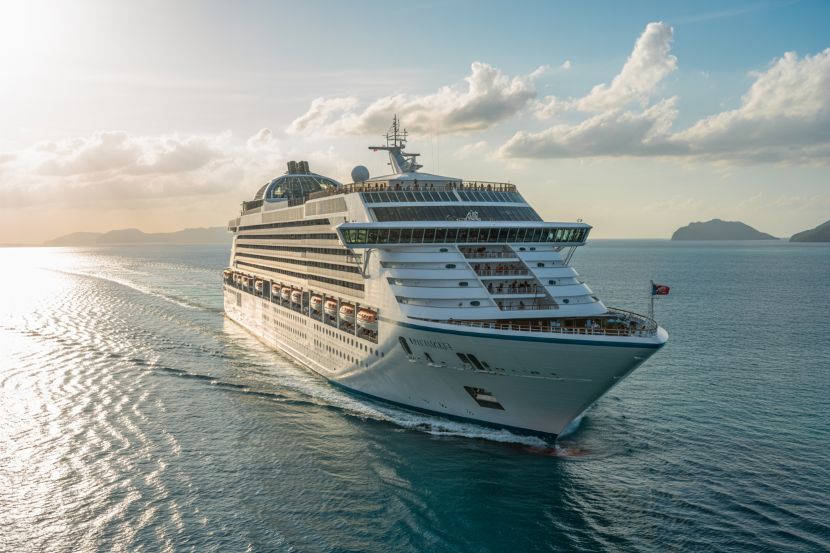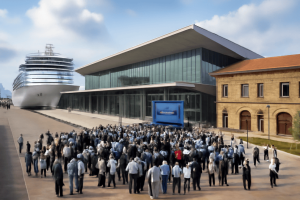Published on October 13, 2025
Europe, long a beacon for cruise tourism, is witnessing a significant shift in how cities are managing the arrival of massive cruise ships. Cities like Venice, Barcelona, and Amsterdam are tightening restrictions, driven by the increasing pressure of overtourism. Once seen as a booming economic force, the influx of cruise passengers is now met with concerns about overcrowding, environmental damage, and the strain on local infrastructure. As the cruise industry adjusts, European destinations are taking bold steps to strike a balance between economic benefits and the well-being of their residents. These changes are set to reshape the cruise experience in the coming years, with new regulations expected to take hold by 2025 and beyond.
The Strain of Overtourism on Europe’s Cities
Overtourism has become a pressing issue for several of Europe’s most iconic destinations. With millions of tourists arriving each year, cities like Venice and Amsterdam face the challenge of balancing economic prosperity with the quality of life for locals. The rising number of cruise ships entering major ports has exacerbated this problem, creating crowded streets, strained infrastructure, and a decline in local residents’ quality of life. The arrival of large cruise ships, while profitable, also adds to congestion, leaving some cities questioning whether the economic benefits outweigh the social costs.
Advertisement
Advertisement
In Amsterdam, the situation is particularly severe, with the city being one of the most visited in Europe relative to its size. This small yet bustling city saw a sharp increase in cruise arrivals, which crowded the already narrow streets and canals. In response, the local government has taken steps to cut down the number of ships entering the port, reducing the number of cruise calls to 100 per year by 2026—half of the previous volume. Similar moves are underway in Venice, where heavy cruise traffic has raised environmental concerns, especially around its delicate lagoon.
Environmental Concerns: Protecting Venice’s Iconic Lagoon
The Venetian lagoon has been a focal point in the debate over cruise tourism. The city’s fragile ecosystem has faced growing pressure from large ships, whose wakes have contributed to erosion. In an effort to protect the lagoon, Venice banned large cruise ships from certain areas, including the iconic San Marco Basin and Giudecca Canal, in 2021. These ships are now rerouted to more industrial ports, helping to mitigate damage to the lagoon. While this move has been controversial, it is a step towards balancing tourism with environmental sustainability.
Advertisement
Advertisement
Looking ahead, Venice plans to allow smaller ships of up to 60,000 tons to dock at specific canals by 2027, providing a compromise that still permits some cruise tourism while protecting the environment. Additionally, the city is considering a further reduction in ship traffic, with the potential for a 20% decrease in cruise visits to the lagoon.
Amsterdam’s Approach: Cutting Cruise Calls and Greener Regulations
Amsterdam, a city known for its picturesque canals and rich cultural heritage, is also struggling with the pressures of overtourism. By 2026, the city plans to cut its cruise ship traffic significantly. With a reduction in the number of berths and a shift to more sustainable practices, Amsterdam hopes to reduce congestion while still benefiting from tourism. The new rules will require all ships to use shore-side power by 2027 to reduce emissions, a key step in the city’s commitment to sustainability.
Advertisement
Advertisement
The shift from a bustling port to a quieter, more manageable number of cruise arrivals is part of a broader trend in Europe, where several cities are making sustainability a priority. For Amsterdam, reducing the number of ships is crucial not only to preserve its historical and cultural charm but also to ensure that future generations can enjoy its beauty without the negative impacts of overtourism.
Barcelona’s Shift Toward Sustainable Tourism
In Barcelona, the impact of cruise tourism has been undeniable. The city’s famous Sagrada Familia and other landmarks often find themselves under siege from crowds brought in by large ships. In response, Barcelona is significantly reducing its cruise capacity. By 2030, the city will close two of its terminals, cutting its cruise traffic by 16%. This move is designed to limit the number of tourists entering the city and to focus on more sustainable tourism practices. The phased project, which involves a €450 million investment, aims to preserve the local culture and environment while still maintaining the economic benefits brought by cruise tourism.
This is part of a broader European trend where cities are implementing regulations to slow down the rapid growth of cruise tourism, opting instead for a more balanced and sustainable approach.
Cannes and Nice on the French Riviera: Managing Cruise Tourism
The French Riviera is also stepping up its efforts to curb the impact of cruise tourism. In Cannes, a well-known hub for the international film festival, the city will implement a ban on large cruise ships—those carrying more than 3,000 passengers—by 2026. This decision aims to reduce both the environmental footprint and the overwhelming crowds that descend on the city. Meanwhile, Nice has opted for a middle ground, limiting the size of ships allowed into the port. By 2025, ships carrying more than 900 passengers will be restricted, helping to strike a balance between tourism and local quality of life.
What Travelers Should Know: Planning for the Future of Cruise Travel
As these regulations roll out, travelers may find their options limited in some of Europe’s most popular cruise ports. While some cities are tightening restrictions on the size and number of cruise ships, others are increasing their focus on sustainability, such as mandating the use of eco-friendly practices like shore-side power. For tourists, this means that smaller, more sustainable cruise lines or river cruises may become more popular options, especially in cities like Amsterdam and Venice.
In Summary: A New Era for European Cruise Tourism
As European ports implement stricter cruise regulations, the industry faces a crossroads. Balancing the economic benefits of cruise tourism with the need for sustainable practices and protecting local communities is no small feat. However, these changes signal a new direction for the future of travel, one that prioritizes long-term sustainability over short-term profit.
Advertisement
Advertisement
Tags: Amsterdam cruise restrictions, European cruise bans, sustainable travel, Venice tourism
I want to receive travel news and trade event update from Travel And Tour World. I have read Travel And Tour World’sPrivacy Notice.
Monday, October 13, 2025
Monday, October 13, 2025
Monday, October 13, 2025
Monday, October 13, 2025
Monday, October 13, 2025
Monday, October 13, 2025
Monday, October 13, 2025
Monday, October 13, 2025




